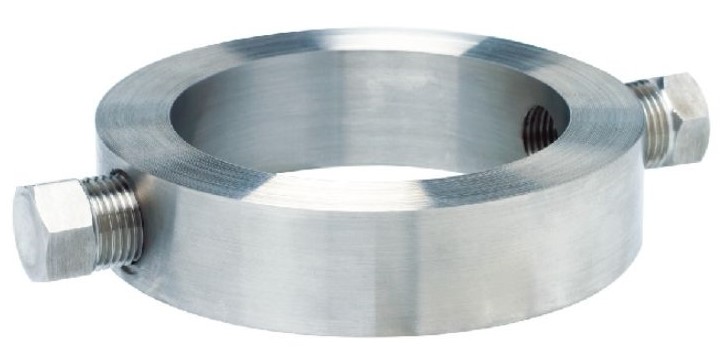In the complex industrial processes utilizing diaphragm seal for pressure measurement, a detail often overlooked but of vital importance is the flushing ring. Let’s examine together the significant advantages derived from the use of this component.
The flushing ring, as the name suggests, is a component consisting of a metallic ring with one or two lateral holes. When inserted between a membrane separator and the process flange, this device can bring considerable improvements in terms of efficiency, reliability, and durability of the industrial system. Its main role is to allow easy cleaning and to maintain optimal conditions of the pressure gauges, ensuring measurement accuracy and minimizing the risk of clogging or contamination.
In systems employing diaphragm seals, especially in the presence of critical fluids, the use of the flushing ring is essential; in fact, mainly during delicate phases of the process, such as shutdown or cooling, fluids can adhere to the diaphragm, potentially causing measurement errors or damaging the instruments themselves.
Specifically designed to facilitate the cleaning of diaphragm seals used with viscous, crystallizing, or sediment-containing fluids, the flushing ring allows easy intervention without the need to dismantle the entire measurement system. Cleaning occurs through the purge holes in the ring, to which needle or ball valves can be connected for feeding and purging the washing fluid.
In addition to cleaning, the flushing ring can perform other crucial functions:
- High-temperature applications: by allowing the introduction of a cooling fluid, it prevents overheating and ensures optimal seal performance.
- Applications with viscous fluids or sediments: it allows the introduction of a purge fluid to prevent deposit formation.
- Applications with hazardous substances: it allows the introduction of an inert gas, providing an additional level of safety.
The presence of the flushing ring, combined with isolation or purge valves, gives operators the ability to constantly monitor and control conditions within their systems, such as by sampling the process fluid or performing on-site calibrations of the measurement point.
In summary, the use of flushing rings brings significant advantages to the industry, including greater measurement accuracy, extended duration of the measurement system, improved operational efficiency, and long-term economic benefits.

